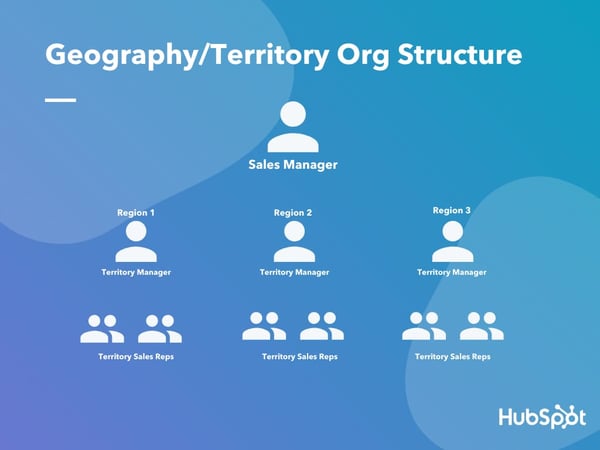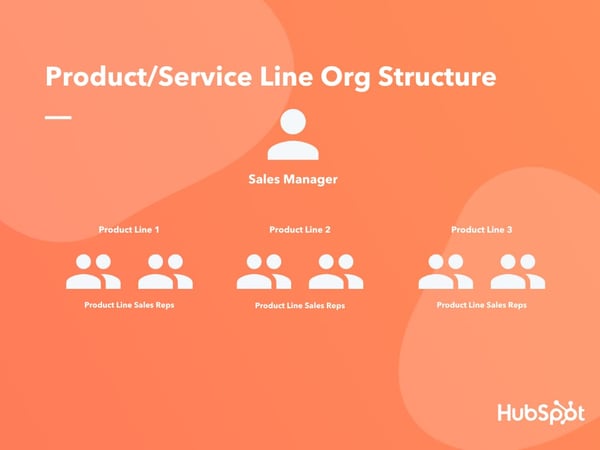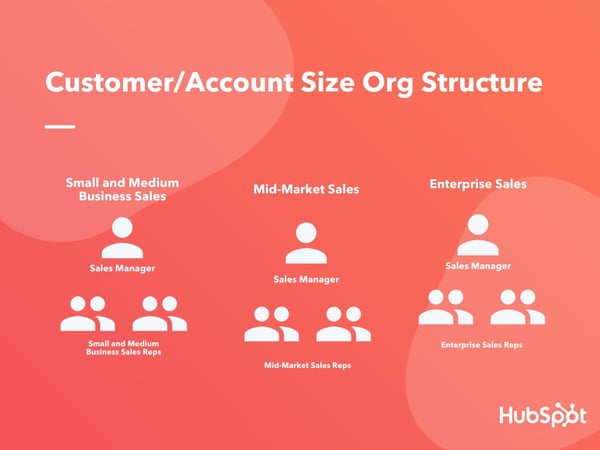When I first started my sales career, I was thrown into the deep end with no real guidance on how to succeed. It was sink or swim, and unfortunately, I didn’t have a lot of success early on. However, as I continued to learn and grow in my career, I began to understand the importance of having a solid sales organization structure in place.
Nowadays, if you’re looking to build a successful sales team or organization, there are certain key pillars that you need to focus on. In this blog post, we’ll take a look at five of those pillars so that you can set your team up for success from the start!
Sales Organization Structure
A sales organization structure is a framework that businesses use to define how sales teams are managed and how sales activities are coordinated. The sales organization structure of a company will vary depending on the size of the company, the products or services that it sells, and the markets that it sells to.
There are a few different ways that businesses can choose to structure their sales teams. The most common models are inside or outside sales, geographic territories, product lines, and SMBmid-marketEnterprise splits. However, some businesses may use a combination of these approaches.
In his new book, “Aligning your strategy and sales,” author, speaker, and consultant, Mr.
Organizational Design, as explained by HBS Senior Lecturer, Michael C.
In the table below, he breaks down the pros and cons for four common salesforce account opportunity divisions.
He argues that the best way to structure a sales organization is by customer account size. When deciding how to structure a sales organization, it is helpful to consider the pros and cons of four commonly used structures: geography territory, product service line, customer account size, and industry vertical segment. He argues that the best way to structure a sales organization is by customer account size.
The structure of your sales team can have a significant effect on its success or failure. For instance, a sales rep who is used to focusing on one market could struggle when tasked with covering an entire country.
If each of your product require in-depth, technical knowledge, it might be better to have reps who specialize in particular products.
Salespeople who only sell to manufacturers will have terrible results with selling to other industries.
Just because a salesperson is successful in one sales role doesn’t mean they’ll be successful in another. This is because salespeople become used to the organizational culture, which impacts their selling style.
Geography and Territory Org Structure
If your company’s products and services are geographically-specific, organizing your salespeople by region can be very beneficial. By building rapport and getting to know local business owners, your reps can better sell to their target customers.
It’s helpful to evaluate the performance of your sales reps by taking into account their market and geographic potential. That way, you can determine which of your salespeople are best suited to which regions, and ensure that each of your representatives is ideally positioned for success.
Geography and territories can hinder a sales rep’s ability to build cross functional knowledge.
Product/Service Line Org Structure
If your organization offers multiple products, it can be helpful to have specific sales people for each product.
Product and service line org structures can help salespeople to better understand the products and services they are selling. By becoming experts on specific products, reps can more effectively communicate their value and use cases to individual clients. This type of structure can be beneficial for companies that sell multiple products or services.
A possible downside to a product focused sales process is that sales reps may focus too much on the features of their products, and not on finding the best solution for the customer.
Organizing Your Sales Org By Account Size
Many sales teams organize their reps by the size of accounts they sell to. The skills needed for selling to a small business are different than for enterprise sales.
By organizing your sales team by the size of their customers’ budgets, you’ll allow them to gain a better understanding of the needs of these customers. This will allow them to provide your larger customers with the information they’ll need to make informed purchasing decisions.
Managing your sales team by the size of each prospect’s company can be a great way to ensure each team member is spending their time on the most lucrative opportunities. However, this can be difficult to maintain, as it requires frequent communication between all members of your sales organization. By staying in close contact with your reps, you can help ensure all clients are receiving the same quality service.
What Sales Team Structure is Best?
The answer to this question depends on a few factors.
Which Channels are You Having the Most Success In?
The most effective marketing strategies are those that use multiple communication channels to reach a wider audience. By diversifying your approach, you can increase your odds of success.
For inside reps, the most effective strategy is one that focuses on territories and accounts. This strategy is most effective for organizations with a smaller pool of prospects for a longer sales process, resulting in bigger deals with more decision makers.
On the digital marketing side of things, building an SDR team can be a very effective method. With a higher volume of qualified inbound leads to respond to, your marketing team can filter out the unqualified ones and have your SDRs do the heavy lifting.
In order to build a successful sales team, your marketing department must be aligned with the sales department.
Where are Your Customers Currently Engaging?
By looking at which channels your customers use the most, you can better understand how to engage with them.
C-level prospects are engaging more in online forums and social media, while manager-level prospects prefer face-to-face contact.
Understanding how people respond to different channels can help you create better content for your audience. For example, if most of your followers on social media are marketing professionals, you can tailor your content to that audience.
Content that’s tailored to marketing professionals is more likely to engage them.
Anatomy of the Modern Sales Team
Before we dive into how to organize a sales team, it’s helpful to understand the different roles that each member plays.
The hiring manger is responsible for finding and retaining talent and getting them onboarded into the company. This role is typically found in larger more establish companies and in smaller companies, the Sales Manager might handle this role.
As the training manager, it is my responsibility to coach new hires on our company’s sales process. In smaller organizations, the sales manager is usually responsible for this, but in larger ones it falls to me. It’s important that our sales teams are trained well in order to succeed.
The sales professional is responsible for managing their own administrative duties. Some smaller companies do not have an administrator, and rely on the sales person to perform these responsibilities.
The SDR is tasked with finding and qualifying new sales opportunities. In smaller companies, the VP of Marketing or CEO may handle this duty.
The sales rep, or the account exec, is the person who will close the sale.
Other roles within the sales team, such as marketing, provide support to reps in optimizing their closing rate.
An account manager is an employee whose job is to manage a company’s relationship with its customers. For large companies, these employees are tasked with overseeing a team of salespeople while smaller businesses usually task this duty to a salesperson.
After the sale, the Account Managers take over. They handle any questions that the client may have. This is particularly important if the sales team does not have their own individual accounts.
The backbone of any company is the sales force. Whether you are looking to grow your customer base or expand your existing client base, the salespeople are the driving force behind your company’s success.
Don’t mess up, or nothing else will matter.
A sales team’s structure is important to maintain an efficient workflow. The model you put into place should help cut costs and optimize the customer acquisition process.
It should help your company save money by optimizing your acquisition costs and utilizing your human resources more effectively.
Before you decide on a sales model, you should learn more about each type to determine which aligns with your business goals.
In this guide, we’ll explain how the modern sales process works, go over different team structures, and give you some tips on how to build a successful one.
3 Team Structures That Dominate Sales
The three most common organizational models for salespeople are assembly line, island, and pod.
Each method has its pros and cons.
Before deciding on a sales structure, it’s important to consider the benefits, as well as the disadvantages, of each. Each option has unique advantages, and depending on your company’s size and industry, one may be more beneficial than another.
Sales Team Structure #1: The Assembly Line
The Assembly Line is an effective sales team structure for organizations looking to divide and conquer the sales process. This linear structure assigns specific jobs to team members based on their skills and expertise, allowing each member to contribute to the success of the sales cycle.
These tasks are usually divided into these areas:
The lead generation team is tasked with finding and qualifying new prospects for the sales organization. This data is then used by the sales team to follow up with and qualify the prospective customer.
The sales team development department takes the lead from the lead generating teams, and qualifies them. This may involve talking to them on the phone, as well as doing further research. Once a qualified prospect has been identified, they are then passed to the account management team.
The SDRs only forward leads to their assigned account executives.
The closers, the AEs, are your sales team. They pursue the deals that have already been vetted and deemed as “qualified”.
These employees are responsible for answering questions, giving demonstrations, and overcoming any objections. They hand them off to other members of the onboarding team who handle the actual account creation.
This team helps new customers adjust to their new products or services.
The goal of sales is to maintain customer relationships, keep clients informed, and seek out new ways for your clients to use your product or service.
The assembly line method of organizing your sales team is suggested for startup companies. By breaking down the tasks into small parts, it enables your salespeople to specialize and master certain parts of the process.
The assembly line model is detailed by close.io, a sales app, as:
Pros of the Assembly Line Model
The benefits of an “assembly line” approach to selling are numerous. First, it allows for more accurate projections of sales figures because each member of the team is held accountable for their own individual performance. Second, it ensures that each member of the “team” is focusing on their own tasks and responsibilities, rather than worrying about what everyone else is doing. Third, it encourages constant improvement and iteration, as team members can experiment with different strategies and approaches.
Pros of the Assembly Line Model
The disadvantages of the “assembly line” model include decreased customer ownership and reduced collaboration between team members. This model of selling isn’t ideal for smaller teams or organizations that don’t have a lot of funding.
Sales Team Structure #2: The Island
The sales reps at this organization work alone, meaning that each sales rep is on their own in the sales process.
Unlike the traditional sales model, the sales rep is responsible for all of the steps of the process, from generating leads to closing the deals and up selling.
This sales structure is aptly named “the island” because the reps are isolated and must sell or die.
The sales structure of the company, which depends on its CEO, works for any firm that still relies primarily on its founders to sell.
The “Island” sales model is a structure that works well for organizations who can’t afford more than a small number of reps.
Here are a few more advantages and disadvantages of the “island” approach to selling.
Pros of the Island Structure
The benefits of an island sales model include using fewer resources and having the most “boots on the ground“. This is perfect for companies on a tight budget. Furthermore, this allows customers to form a relationship with their sales rep or AE. Last, you can customize your territory to fit your team’s skills.
Pros and Cons of the Island Structure
The island sales team structure has a few potential drawbacks. One is that it decreases the control you have over how your brand is presented. This is because sales reps have their own unique styles and might approach the sales process in individualistic ways.
Another potential drawback is that it increases the risk of customer churn if you have turnover on the sales team. This is because the rep who is leaving might be the primary connection the customer has with the company.
Finally, this structure provides fewer opportunities to develop new or less experienced reps. This is because they might not be able to keep up with the experienced sales reps on an island team.
Sales Team Structure #3: The Pod
The pod team structure is an effective way to organize your sales reps. By dividing them into small groups, they can collaborate and learn from each other, leading to better overall results.
Each sales “pod” is usually made up of employees who do lead generation, lead qualification, closing, and customer onboarding.
The Pod Sales Model combines the ideas behind the two most popular types of team structures: the assembly line and the island. The division of labor comes from the former, but individual success stems from the latter.
The pod style works best for organizations with a massive sales force, or for those that have the resources to beef up their sales staff.
The folks at closeio.com have put together some pros and cons of pod sales structure.
Pros of Pod Sales Team Structures
Empowers the sales team to be more customer-centricThe pod sales team structure has many benefits that can help a company. For one, it helps the individuals see and care about the entire customer journey. This means that they will be more likely to provide excellent customer service throughout the buyer’s journey.
Additionally, it reduces friction in transitions and enables better communication within the team. This can help to make the sales process more efficient and streamlined.
Finally, it facilitates flexibility and agility to the sales team. This allows them to be more responsive to changes in the market or the needs of their customers.
Cons of Pod Sales Team Structures
The pods in the Podio Sales Team Structure have a few possible downsides. First, it may limit competition among team members, which inhibits natural growth in a competitive environment. Second, it may decrease the amount of specialized knowledge for each team member, which may result in a lack of innovation.
How do you write a sales structure?
A sales structure is the framework that you will use to organize and manage your sales team. It should be designed to help you achieve your sales goals and objectives. There are a number of different ways to write a sales structure, but the most important thing is that it is clear and concise. It should also be easy for you to change and adapt as your business grows and changes.
Conclusion
If you want to build a sales organization that will thrive, make sure you focus on these five key pillars. By doing so, you’ll set your team up for success from the start!
Request a Data License and Access the World's People + Company Data
Want 300 million+ profiles at your fingertips? Updated monthly with the data on your own server/host!
Including personal emails, business emails, mobile numbers, mailing addresses and more.
You get net worth, ages, company data, and more.
Use it for cold outreach, paid ad campaigns, direct mail, social selling or even cold calling.
Use it with unlimited access for your own app, outreach campaigns, or as a client service.
Oh, and did I mention we can identify individuals visiting your, or your client's, website?
Contact us for how you can access the entire dataset, on your own server. No more API limits, no price per contact.
[/scWant to help contribute to future articles? Have data-backed and tactical advice to share? I’d love to hear from you!
We have over 60,000 monthly readers that would love to see it! Contact us and let's discuss your ideas!






